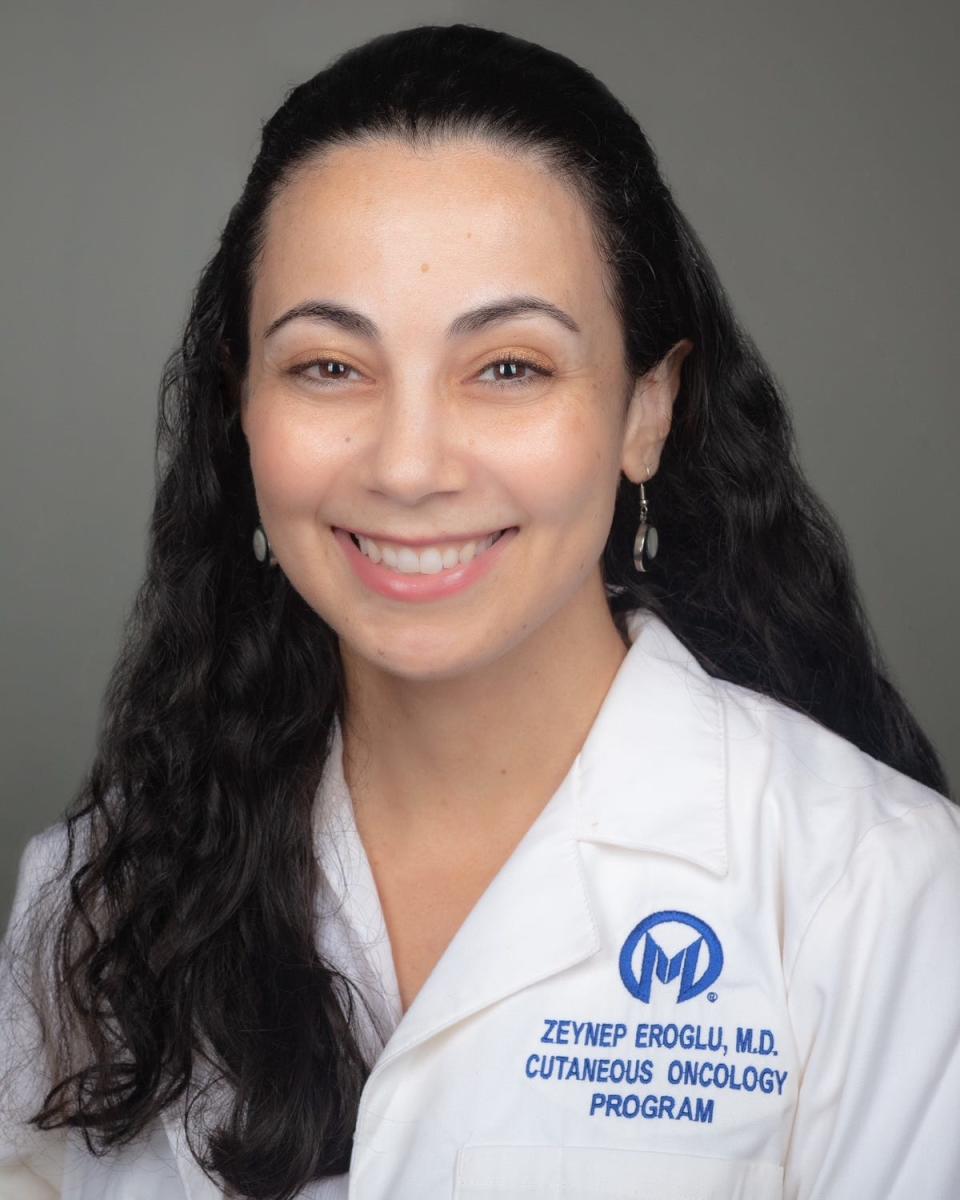Looking to the future Cancer specialists optimistic about expanded melanoma treatments
The past decade was an exciting time for patients diagnosed with advanced melanoma, the least common but most dangerous skin cancer.
Oncologists became able to provide a greater array of treatments, among them immunotherapy.
Immunotherapy, using drugs called immune checkpoint inhibitors, empowers the body’s immune system to do better at fighting cancer. The drugs target proteins (checkpoints) that are preventing the immune system from attacking melanoma aggressively enough.
Also important are “targeted therapy” drugs designed to treat specific gene mutations, according to area doctors who treat melanoma.
About half of all melanomas have a type called BRAF gene mutation.
Immunotherapy and targeted drugs have been shown more effective than chemotherapy in post-surgical treatment of advanced melanoma patients whose melanoma has reached distant lymph nodes or organs.
As clinical research trials showed how immunotherapy could boost immune system response and lower melanoma recurrence rates, those drugs became regularly used as treatment by doctors outside research centers.

“It was very gratifying to see immunotherapy drugs becoming widely available,” said Dr. Zeynep Eroglu, a medical oncologist at Moffitt Cancer Center and lead investigator for several current melanoma trials there.
The growing number of approved immunotherapy and targeted therapy drugs, and combinations of them, has oncologists and dermatologists optimistic.
Not only about what’s available now but what could lie ahead.
“The future of melanoma treatment is bright, especially for stage 4 (distant lymph nodes or other parts of the body),” said Dr. Manuel Molina-Vega, surgical oncologist at Lakeland Regional Health’s Hollis Cancer Center.
Researchers continue testing different combinations of immunotherapy drugs, seeking the best outcomes for different patients, said Dr. Shalini Mulaparthi, medical oncologist at Watson Clinic.
“Each patient is unique,” she said. “How can we make the duration of the remission last longer?”
Factors medical oncologists consider in deciding whether to prescribe immunotherapy include how thick the melanoma is, whether a gene mutation exists, the person’s age, kidney function and their treatment preferences.
The survival rate for distant-stage melanoma illustrates both significant achievements and the need for more research.
Five-year survival at that stage is 30 percent, much lower than the 99 percent when melanoma is caught early.
That 30 percent, however, is twice the 15 percent rate in 2004.
Major advances in treatment are the reason, according to cancer specialists, including the American Cancer Society.
Now doctors are investigating how immunotherapy and other treatments can benefit patients in earlier stages of melanoma, not just when it’s advanced.
They’re studying the potential benefits of giving immunotherapy and other therapies to patients with advanced melanoma before their surgeries take place, such as immunotherapy to shrink a tumor before a surgeon removes it.
That’s called neoadjuvant therapy.

More neoadjuvant immunotherapy before surgery could reduce the size of tumors being removed surgically, which Dr. David Straughan, plastic surgeon at Hollis, points out could make subsequent plastic surgery less extensive.
Neoadjuvant immunotherapy is “a very active area of research,” Eroglu said.
Guidelines for neoadjuvant immunotherapy aren’t as established as they are for using immunotherapy after or along with other treatments.
That makes close “multidisciplinary collaboration” crucial among different types of specialists involved in treating a patient, Eroglu said.
Tumor boards, at which all specialties involved discuss different cases, are a key way of doing that. They can include surgical, medical and radiation oncologists; dermatologists, plastic surgeons, radiologists; and pathologists.
All physicians interviewed were positive about melanoma advances to date, but all do have areas in which they’d like to see more study.
Their interests include expanded use of immunotherapy prior to surgery, more options for patients whose melanoma isn’t brought into remission by immunotherapy, study of additional drugs and combinations of drugs; and improvements in creating new tissue for skin grafts needed after surgery.
Eroglu emphasized the importance of patients being willing to participate in trials of different drug or treatment combinations.
One of the newest combinations of immunotherapy drugs is Opdualag, approved in March as a result of a clinical trial called RELATIVITY-047.
Opdualag combines the drugs relatlimab and nivolumab. Both drugs are immune checkpoint inhibitors.
Relatlimab blocks a protein called lymphocyte-activation gene 3. Nivolumab blocks a different inhibitory protein called protein death 1 (PD-1).
Trial results found the combination, by inhibiting both LAG-3 and PD-1, could provide greater benefits than only inhibiting PD-1 for patients who have untreated metastatic melanoma or melanoma that can’t be removed surgically.
Watchers of television advertising may know nivolumab better as Opdivo.
Opdivo and a similar-acting drug called Keytruda (pembrolizumab) commonly are used for follow-up after surgery for melanoma patients whose lymph nodes are positive, Molina-Vega said.
Contact Robin Williams Adams, robinwadams99@yahoo.com
Melanoma in the United States 2022
Estimated new cases: 57,180 in men and 42,600 in women
Estimated deaths: 5,080 in men and 2,570 in women
Florida is expected to have 9,650, almost 1 in 10, of those projected 99,780 new cases nationwide, and 610 ( 8 percent) of 7,650 total projected deaths.
These are melanoma of the skin cases. Some rarer types of melanoma appear in different parts of the body rather than on the skin.
Source: American Cancer Society
Five-Year Melanoma Survival Rates
99 percent localized melanoma (no sign cancer has spread beyond skin)
68 percent regional (spread to nearby structures or lymph nodes)
30 percent distant (spread to distant parts of body like lungs or liver)
These apply to the stage of the melanoma when first diagnosed. They represent cancer survival in the absence of other causes of death.
Source: American Cancer Society
This article originally appeared on The Ledger: Cancer Specialists Optimistic About Expanded Melanoma Treatments

